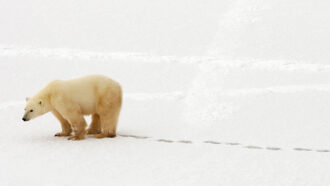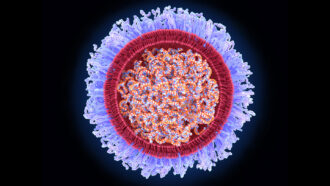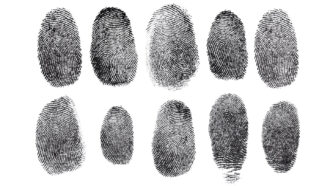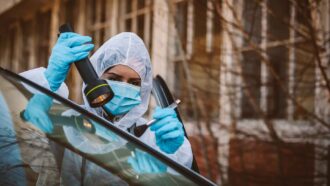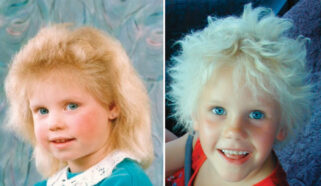Can DNA editing save endangered species?
Scientists are considering whether — and when — to use new genetic tools
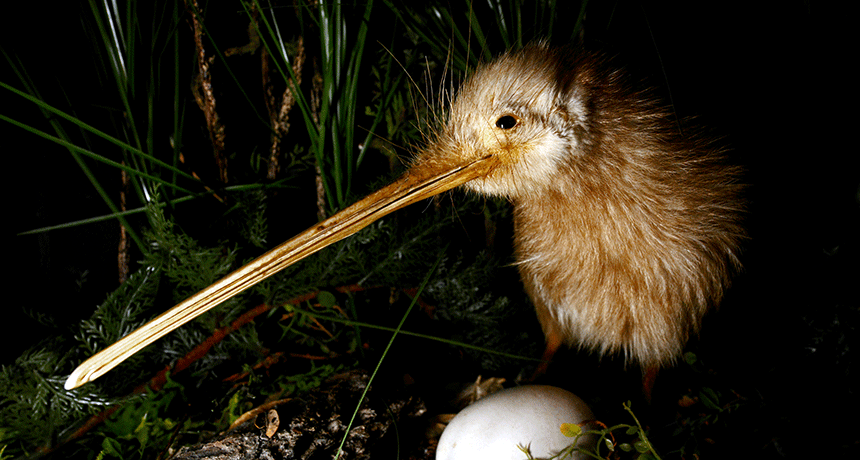
Kiwis and other native birds in New Zealand are in trouble. In the 19th century, European traders and immigrants introduced many foreign rats, stoats and other animals to the South Pacific island nation. Since then, many of these non-native animals — known as invasive species — have been preying on the native birds, some of which don’t fly. New Zealand’s leaders want to get rid of the invaders. And a new technology could help. But scientists are now questioning whether that is a smart thing to do.
Kevin Esvelt is an evolutionary ecologist at the Massachusetts Institute of Technology in Cambridge. An evolutionary ecologist studies the genetics of living things and how species have changed over time. “You need to be very careful,” Esvelt says. It’s always possible, he notes, that some “solution” might cause problems elsewhere in an ecosystem.
Esvelt is talking with people in New Zealand about a plan. They’re considering use of a type of gene-editing tool known as a gene drive. It can copy and paste itself into the genome of an organism. (A genome is the complete set of genetic instructions in an organism.) Once the gene drive is inside the genome, it could change the genes of some invasive species in a way that would make that species die off at sites where it doesn’t belong.
That may sound like a good thing. Indeed, many scientists hope it will be. Still, they have concerns. After all, if a gene drive “escapes,” it could kill that targeted species even in places where it does belong.
Tina Saey of Science News magazine has a doctorate degree in molecular genetics. She has covered gene editing and gene drives a lot. In an award-winning feature story in the magazine, she notes: “Researchers have designed ways to keep [gene drives] confined in the lab.” However, she adds, “no such safety nets exist for gene drives released into the wild.”
Wiping out an entire species, even if it’s a pest, raises questions about whether such a move would be the right thing to do. To date, she points out, scientists and policymakers are only just starting to think about this.
How it works
In recent years, a new and very popular tool has been available to tinker with genes. It’s known as CRISPR/Cas9. Most people just call it CRISPR. (That’s much shorter than using its entire name: “clustered regularly interspaced short palindromic repeats.”) The Cas9 part is an enzyme. It’s a molecular scissors, of sorts, that cuts DNA.
Scientists inject Cas9 into a cell in which they want to alter DNA. But Cas9 is blind and doesn’t know where to make cuts. It needs a buddy, like a guide dog, to show it where to snip. In this case, the guide dog is a small piece of another type of genetic material, called RNA. The guide RNA shows Cas9 where to cut.
Guide RNAs are very picky. They will only take Cas9 to one particular place in the genome. It’s similar to a guide dog leading its owner to one particular subway station and to the correct track. Even though there are many subway stations and multiple tracks, only one is the right one.
Once Cas9 and its guide reach their destination, the scissors snips the DNA. Then, other things can happen. One possibility is that the cell can repair the cut. Sometimes the repair is done by sticking the cut ends back together. That can break the gene. Sometimes the repair fixes a previously broken gene, by using a healthy copy of the gene as a pattern. Scientists have used this RNA-enzyme combo to break and fix genes in many types of animals.
Another possibility is that a piece of DNA that the researchers have injected into the cell (along with Cas9) can be pasted into the cut section. Scientists use this method to insert genes into plants and animals at precise locations.
Gene drives take the CRISPR system a step further.
A gene drive uses an extra piece of DNA to paste into the cut. That extra DNA contains the code to make the CRISPR system again. It’s like a combination scissors and copy machine that can make copies of itself.
When an animal or plant carrying a gene drive mates, its eggs or sperm will make the scissors protein and the guide RNA. When the egg or sperm from the organism with the gene drive fuses to an egg or sperm from an unaltered organism, the gene drive goes to work. Cas9 cuts the unaltered DNA in the place where the guide RNA shows it to. Then, the cell repairs the break by putting in a copy of the gene drive. It’s that extra copying step that makes a gene drive different from regular CRISPR.
What makes a gene drive special
Normally a parent has a 50/50 chance of passing any given gene along to its offspring. But gene drives take over any unaltered version of the target gene. So, they can be passed along almost 100 percent of the time. That’s why they are called gene drives — because they break the 50/50 genetic speed limit.
Scientists have used gene drives in the lab to alter eye color in fruit flies. They have tinkered with yeast. Two separate groups have made CRISPR gene drives to stop mosquitoes from transmitting malaria. (One group of researchers altered the mosquitoes so that the insects can’t carry the malaria parasite. The other group altered genes so that the mosquitoes can no longer reproduce.)
CRISPR gene drives could set the stage to make gene edits in nearly every member of a selected species. How? Scientists add the new gene they want to alter — let’s call it a “taming” one — to the targeted species. Then the CRISPR gene drive makes this change whenever it finds a wild (untweaked) version of the gene.
As the genetically “tamed” organisms breed with wild ones, the CRISPR gene drive “cuts the original version and replaces it with the edited one,” Esvelt explains. Now, “in the next generation, all the offspring are guaranteed to inherit it. And again. And again. And again.” Eventually, practically every organism in a population will be born with the newly inserted taming gene.
Breaking that speed limit
In a small population, that change can take just 12 to 24 generations. For short-lived animals like a rat, that may amount to only several years. If any organisms with the altered gene go elsewhere, they can spread that gene drive into a new population. For instance, Esvelt notes, “Rats are really good stowaways [on ships].” Or people could intentionally move them. Just a handful of altered organisms released into a new population should be able to quickly spread the gene drive through all of them, Esvelt says.
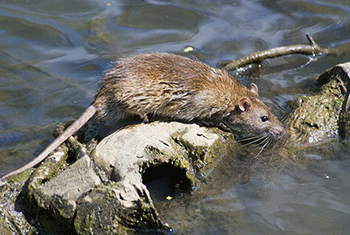
He even suggests a humane way to kill off a rat population that threatened local bird species: Add a gene that makes the rats infertile. Individual rats wouldn’t suffer. But they couldn’t have more babies. Over time, the local population would die out. And the rats’ threat to the birds would go away.
But even rats have native populations where an ecosystem depends on them. So scientists don’t want to kill them off everywhere in the world. Otherwise, that could throw off the ecological balance somewhere else. Esvelt’s group has proposed a way to limit that risk.
“We call this a daisy drive, because it involves creating a gene-drive daisy chain,” he explains. Just as each flower in a chain of daisies is a separate unit, each part of the “daisy” gene drive would have part of the instructions for CRISPR and the gene drive. And those parts are scattered around in different places in the genome. Because only half of a parent’s DNA is passed on to offspring, some of the pieces won’t get inherited in the next generation. Without all of the pieces in one organism, the gene drive eventually gets a flat tire and can’t drive anymore.
Esvelt has gotten the daisy chain gene drive to work in the lab with tiny worms known as nematodes. The results are “very preliminary,” he says. However, he believes, it’s time to start talking about the idea.
Do we have the right?
Todd Kuiken is an environmental scientist at North Carolina State University in Raleigh. He and Esvelt talked about gene drives and CRISPR on October 6. They were taking part in the Society of Environmental Journalists’ annual meeting in Pittsburgh, Pa. Kuiken agrees that lots of people should think hard and talk about whether and how to couple gene drives and CRISPR.
“Do we as humans really have the right to do this?” Kuiken asks. That’s a big question. What he means is that there’s a lot at stake with a version of a gene drive that is designed to spread a change in the environment forever. Even with the daisy chain, he wonders whether humans have the right “to remove one species from one area where we don’t want it, or that we don’t think is good for it.”
Also, he asks, “where do you field-test a gene drive?” After all, the animals people want to change don’t stay put. They tend to roam about an ecosystem.
No one has clear answers on what is the right thing to do. Nor is it clear who should have the right to make the final call, Kuiken says. Yet that doesn’t mean the technology shouldn’t be used at all, he adds. Indeed, he noted, if people wait too long, it may be too late to save an endangered species.
This video explains what makes a gene drive. Stat News/Vimeo.

